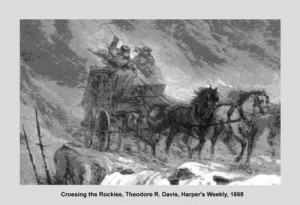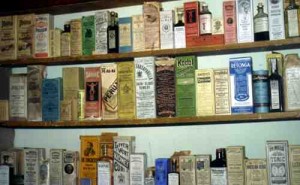Review by Robert Adams
Colorado – September 2008 – Colorado Central Magazine
The New West – Landscapes Along the Colorado Front Range
Written and photographed by Robert Adams with a foreword by John Szarkowski
Originally published in 1974 by Colorado Associated University Press
Reissued as a facsimile using original prints by the Aperture Foundation in 2008
YEARS AGO Ed took to calling the photography offered on Colorado calendars “enviro-porn” because it air- brushed, sanitized and cleaned-up scenery more effectively than Playboy banished moles, tan lines and cellulite.
Feminists have long warned that Barbie Dolls and Playmates create unrealistic — and perhaps even cruel — standards. So what about all of those montane images of the scenic West sans roads, mines, phone poles, towns, homes and people?
Crazily, such standard photo fare seems to merchandise wilderness, thereby encouraging more and more development, traffic, roads, homes, fences, mini-malls and parking lots. But The New West is not that sort of book. It’s a scenic montage to be sure, but the scenery in this volume includes warts and blemishes. In fact, this book revels in warts and blemishes. And its written passages are short, reflective, amusing, provocative, and to the point. In the foreword, Szarkowski writes:
“As Americans we are scarred by the dream of innocence. In our hearts we still believe that the only truly beautiful landscape is an unpeopled one. Unhappily, much in the record of our tenancy of this continent serves to confirm this view. So to wash our eyes of the depressing evidence we have raced deeper and deeper into the wilderness, past the last stage-coach stop and the last motel, to see and claim a section of God’s own garden before our fellows arrive to spoil it.
“Now, however, we are beginning to realize that there is no wilderness left….”
Adams revealed the front range as it was in the 1960s and ’70s, and wrote:
“Many have asked, pointing incredulously toward a sweep of tract homes and billboards, why picture that? The question sounds simple, but it implies a difficult issue — why open our eyes anywhere but in undamaged places like national parks?
“One reason is, of course, that we do not live in parks, that we need to improve things at home, and that to do it we have to see the facts without blinking….”
The New West’s photographs illustrate Colorado’s non-wilderness the way we’ve actually developed it — with subdivisions, trailers, parking lots, roads, wires and gas stations. The place Adams portrays is extraordinarily ugly, but also beautiful, and will be all too familiar to Colorado Central readers. Although the scenes are somewhat dated, construction, development and sprawl still dominate along the front range.
Adams warned, “A strip city, largely suburban, is evolving along the Front Range from Wyoming to New Mexico.
Development has been anarchic, building is monotonous, and life inside is frozen by anonymity and loneliness.
“Few of the new houses will stand in fifty years: linoleum buckles on counter tops, and unseasoned lumber twists walls out of plumb before the first occupants arrive….”
Today, the region is noticeably more crowded than it was when Adams photographed it. But in some ways it looks better — less haphazard, raw, and junk-strewn, and considerably more landscaped than it did thirty-four years ago. Now the houses are bigger, the countertops are often granite, the electrical lines are frequently buried, and parking lots are usually edged with grass and junipers.
But is it better?
I leave that to you.
Adams’ view of the front range was poetic and thought-provoking more than thirty years ago, and it still is today. This book was compiled to make people think about the sort of communities modern Westerners are creating. And, if anything, Adams’ insistence that we should look at Colorado the way it really is, rather than the way we usually picture it, is even more important today.
Now we are starting to realize that sprawl, traffic, inconvenience and unsightliness may not be the worst of our problems. Poor planning encourages waste, inefficiency, spiraling costs, dwindling resources, environmental degradation, water woes, air pollution, loss of habitat, wildfires….
But it’s doubtful that anything can inspire contemplation of such matters more readily than the photos and words in this book, which clearly show just how badly Coloradans can treat this majestic wilderness we love.


